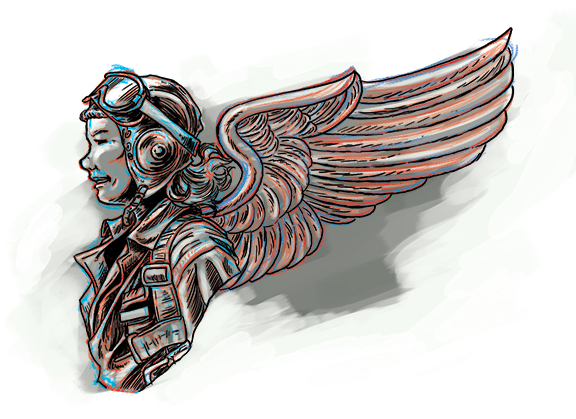The Forgotten Women Flyers of World War II
Of the many stories that have gone forgotten among the many annals of World War II, one that has been especially overlooked is that of the role that women played in the war effort. By 1942 the allied armed forces were hurting for more combat pilots, so groups of women pilots were formed in order to take over for non-combat flying duties. What started as the Women’s Auxilliary Ferrying Squadron (WAFS) under the command of Nancy Harkness Love (a woman with a name straight out of a mystery novel), was later merged with the Women’s Flying Training Detachment (WFTD), led by famous pilot/socialite Jacqueline Cochran, and turned into the Women Airforce Service Pilots (WASPs).
Cochran is credited heavily with lobbying the United States Army Air Forces, specifically Lt. General Henry H. “Hap” Arnold for more piloting opportunities which resulted in the formation of the WFTD and the WASP. Cochran was placed as the director of the unit and Nancy Love heading up the Ferrying Division.
Upon its formation in 1943 over 25,000 women applied but in the end only 1,074 were chosen. The group’s training was centered out of Avenger Field in Sweetwater, Texas, formerly the Sweetwater Municipal Airport. During the height of activity in World War II it became the largest all-female air base in all of US history. Due to the state of their training planes being mostly left over aircraft in dire need of repair and replacement 38 of the 1074 pilots lost their lives in the course of their training, however despite the well documented mechanical problems, most of the deaths were ruled “pilot error” an example of some of the gender bias that was prevalent at the time. Though Jacqueline Cochran herself received the Distinguished Service Medal for her time in both units, the rest of the WASPs had to wait until the 1970s to gain veteran status and it wasn’t until 2009 when President Obama honored them with the Congressional Gold Medal.
Today, Avenger Field is home to the National WASP World War II Museum, with Hangar One housing many exhibits documenting the history and lives of the women and their service. Some highlights include an exhibit on Jacqueline Cochran, numerous WWII era planes including the Stearman PT-17, a recreation of the barracks in which the trainees lived, and numerous photographs and documents from when the base was in operation.
If you are interested in the forgotten history of the women who served our country in wartime then this museum is a great place to learn about it. The next time you are near Sweetwater, I recommend you stop in.

